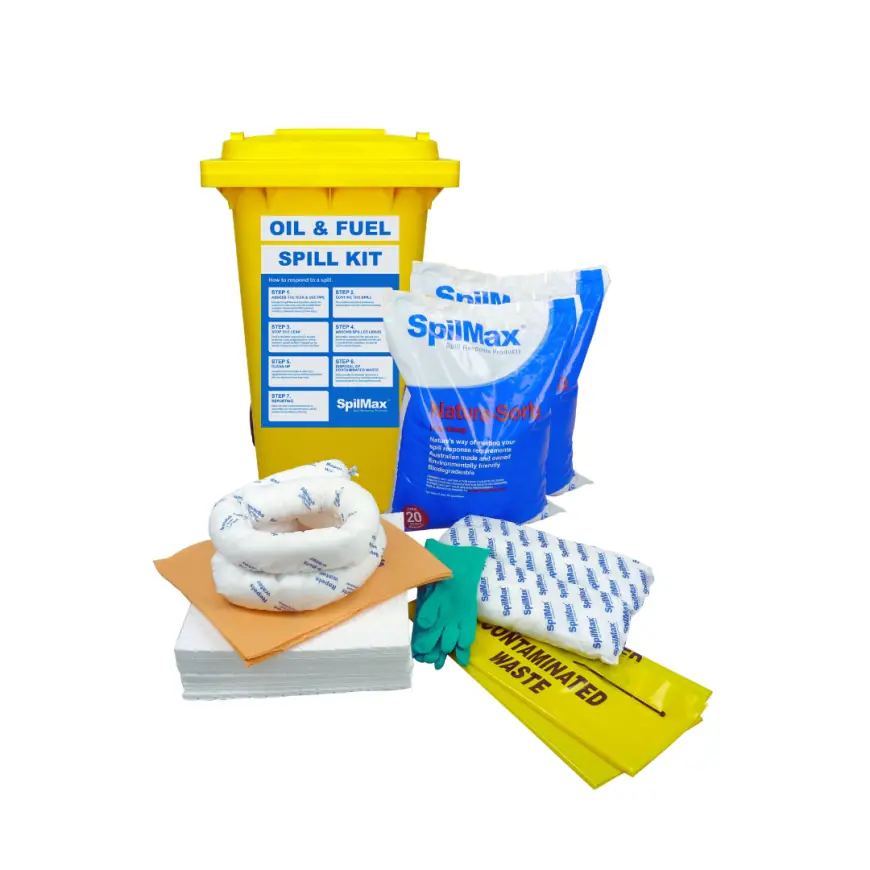Comprehensive Guide to Chemical Spill Kits: Everything You Need to Know

What is a Chemical Spill Kit?
A chemical spill kit is an essential safety tool designed to contain, neutralize, and clean up hazardous chemical spills in workplaces, laboratories, and industrial environments. These kits help prevent contamination, protect workers, and comply with regulatory safety standards.
Why Are Chemical Spill Kits Important?
Chemical spills can pose serious risks, including environmental contamination, workplace hazards, and regulatory violations. A well-equipped chemical spill kit ensures a rapid and effective response, minimizing damage and keeping employees safe.
Types of Chemical Spill Kits
Different spill kits are designed for specific types of chemical spills. Choosing the right one depends on the substances being handled in your workplace.
1. Universal Spill Kits
These are multipurpose kits used for cleaning up non-aggressive liquids such as coolants, water-based chemicals, and mild solvents. They contain general absorbents that work well for most spills.
2. Oil-Only Spill Kits
Designed for oil and hydrocarbon spills, these kits include hydrophobic absorbents that repel water while absorbing oil, making them ideal for marine and industrial applications.
3. Hazmat Spill Kits
Hazmat spill kits are used for highly hazardous and aggressive chemicals, such as acids and caustic substances. They contain special absorbents and protective equipment to handle dangerous spills safely.
Essential Components of a Chemical Spill Kit
A complete chemical spill kit typically includes:
-
Absorbent Pads and Socks – To contain and soak up spilled chemicals.
-
Neutralizing Agents – For specific chemicals like acids or bases.
-
Personal Protective Equipment (PPE) – Including gloves, safety goggles, and protective clothing.
-
Disposal Bags and Containers – For safe removal of contaminated materials.
-
Spill Response Instructions – To guide users through the cleanup process.
How to Use a Chemical Spill Kit Effectively
A proper spill response ensures safety and compliance with health regulations. Follow these steps to manage a chemical spill effectively:
1. Assess the Spill
Before taking action, identify the type and quantity of the chemical spilled. If the spill is hazardous, evacuate the area and follow emergency procedures.
2. Equip Protective Gear
Wear appropriate PPE from the spill kit to minimize exposure. This may include gloves, safety glasses, and chemical-resistant suits.
3. Contain the Spill
Use absorbent socks or barriers to prevent the spill from spreading. This step is critical in minimizing environmental and workplace contamination.
4. Absorb and Neutralize
Apply absorbents to soak up the chemical. If the spill involves hazardous substances like acids or bases, use neutralizing agents before absorption.
5. Dispose of Contaminated Materials
Place used absorbents, protective gear, and any contaminated items into designated disposal bags. Follow local disposal regulations to ensure proper waste management.
6. Decontaminate the Area
After removing the spill, clean and sanitize the affected area to eliminate any residual chemicals.
7. Report and Restock
Document the incident for compliance records and restock the spill kit to ensure readiness for future spills.
Regulatory Compliance and Workplace Safety
Employers must ensure compliance with Occupational Safety and Health Administration (OSHA) regulations and Environmental Protection Agency (EPA) guidelines regarding chemical spill management. Having readily available spill kits is a legal requirement in many industries.
Choosing the Right Chemical Spill Kit
Selecting the right spill kit depends on several factors:
-
Type of Chemicals Used – Identify the substances handled in your workplace.
-
Volume of Potential Spills – Choose a kit that can handle the maximum expected spill size.
-
Workplace Environment – Consider whether spills are more likely to occur indoors, outdoors, or near water sources.
Best Practices for Maintaining a Spill Kit
-
Regular Inspections – Check that all items are stocked and in good condition.
-
Employee Training – Ensure workers know how to use the spill kit properly.
-
Proper Storage – Keep spill kits in easily accessible locations for quick response.
Conclusion
A chemical spill kit is an essential component of workplace safety, ensuring that hazardous spills are managed quickly and effectively. Choosing the right kit, following proper spill response protocols, and ensuring regulatory compliance can significantly reduce risks and enhance safety.












